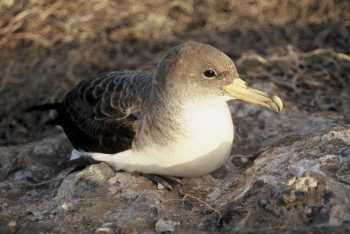José Manuel Arcos (SEO/BirdLife, Spain) and colleagues, publishing on-line in the journal Biological Conservation have looked at how at-sea surveys of Cory's Calonectris diomedea and Balearic Puffinus mauretanicus Shearwaters and European Storm Petrels Hydrobates pelagicus can be used to identify "foraging hotspots" in the Mediterranean for protection. The Balearic Shearwater is likely to become an ACAP-listed species this year.
The paper's abstract follows:
"Protected areas play a key role in the preservation of biodiversity, but their implementation at sea is lagged behind terrestrial environments, especially in offshore areas. Here we describe the identification of foraging hotspots off the Mediterranean Iberian coast using three Procellariiform species as examples, and assess the stability of these sites. Then, we show how these foraging hotspots contributed to the delimitation of marine Important Bird Areas (IBAs). The whole process consisted of: (1) seabird data collection (extensive boat-based surveys and seabird tracking, conducted in 1999-2010) and compilation of relevant spatial descriptors of the marine environment; (2) species distribution modeling (SDM) aimed at identifying areas with high habitat quality for the different seabird species (3); identification and delineation of the main seabird hotspots, based on models, supported by direct seabird data, and mediated by expert opinion; (4) application of BirdLife International IBA criteria for hotspot validation; and (5) combination of hotspots from different species to set the final limits of the marine IBAs. This approach allowed to identify a series of hotspots for pelagic species in the study area, and provided nice examples of stability assessment, which slightly differed in performance between seabird species. They contributed to the Spanish marine IBA inventory, which is in the process of receiving legal protection. Future work should be directed at confirming the stability of the marine IBAs in the long term, and to address the development of management plans to make effective the protection of these sites.

Cory's Shearwater. Photograph by Paulo Catry
Reference:
Arcos, J.-M., Bécares, J., Villero, D., Brotons, L., Rodríguez, B. & Ruiz, A. 2012. Assessing the location and stability of foraging hotspots for pelagic seabirds: an approach to identify marine Important Bird Areas (IBAs) in Spain. Biological Conservation In Press, Corrected Proof.
John Cooper, ACAP Information Officer, 29 January 2012

 English
English  Français
Français  Español
Español